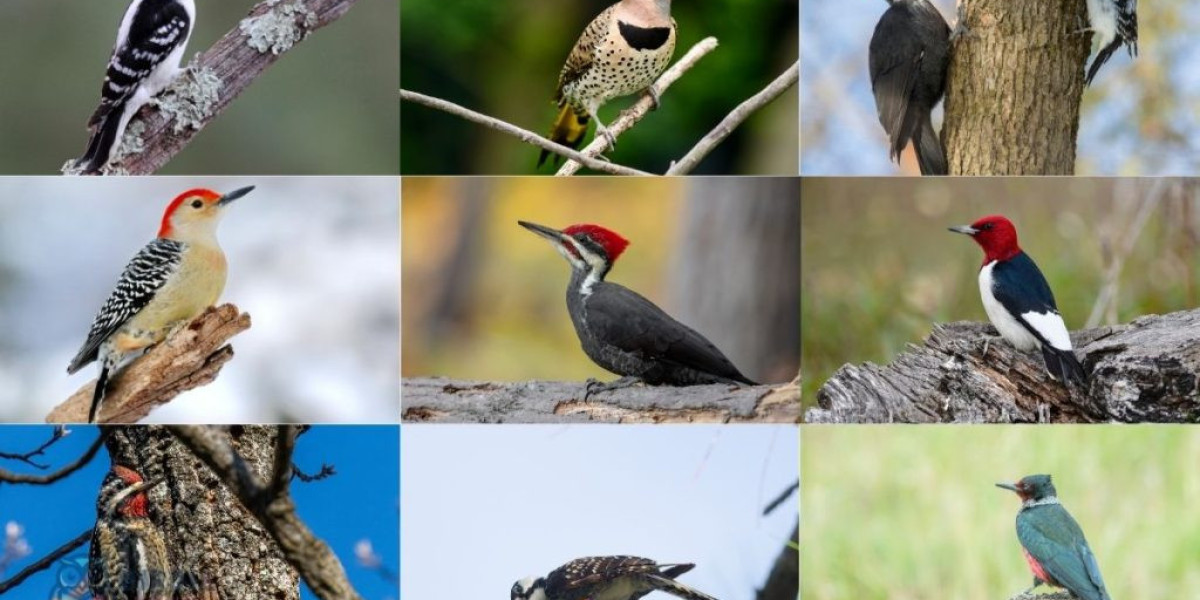I’ll admit it I didn’t set out to become a “woodpecker person.” I’m an IT blogger who spends a lot of my life thinking in systems: servers, logs, dependencies. But one autumn morning, juggling a coffee and a client call on speakerphone, I froze. A rhythmic tat-tat-tat tapped through the neighborhood trees a code I couldn’t ignore. That sound pulled me out of the stack-trace haze and into the canopy for a half hour of curious, quiet observation. What I found up there the habits, the engineering, the strange little personalities turned out to be strangely useful when you’re thinking about building a career in tech.
Below: the things you don’t see when you only look from ground level and why they matter.
Up in the Canopy: Hidden Habits and Surprising Skills
Walk a Virginia trail and you’ll hear drumming more often than you’ll see feathers. The Woodpeckers Of Virginia are a diverse crew: the tiny downy woodpecker and the bigger hairy woodpecker (easy to confuse at a glance), the boldly bearded pileated woodpecker, and the colorful red bellied woodpecker and red headed woodpecker. Then there’s the flamboyant northern flicker woodpecker, whose brown-speckled chest and spotted wings look more like a wood-loving robin than the classic chisel-nosed bird you imagine. You might even spot (or at least hear about) rarer visitors like Lewis’s woodpecker or the conservation-sensitive red cockaded woodpecker.
From the canopy’s perspective these birds have jobs: drilling for insects, excavating nest cavities, and crucially surveying the world with a series of tiny, repeated signals. The behaviors look simple from the ground, but up close they’re a suite of survival strategies honed for specific niches. Observing that micro-specialization reminded me of how important specialization is in tech and how systems that look chaotic often have tidy rules if you climb up and look.
Drumming, Communication, and Code: How Woodpeckers Send Messages
You’ve probably heard a woodpecker before: a steady percussion that sounds like someone tapping a pencil on a table. That’s not random. Drumming acts as a searchlight territory boundaries, mating calls, and status updates are all sent via different tempos and intensities.
Think of it like log messages in an application. A light, repetitive drum is an INFO-level ping: “I’m here, this area’s taken.” A loud, frantic series might be WARNING or ERROR. The yellow bellied sapsucker, for example, drills shallow rows of sap wells and returns to them its “logs” are both a message to others and a functional, feeding system. Likewise, the northern flicker woodpecker often forages on the ground for ants, but its drumming and calls still serve community-level signaling.
If you’re exploring IT, consider how observability (metrics, logs, traces) mirrors what birds do instinctively. They make things visible. If you can’t see the signals your system is sending, you’re blind to what’s happening in the trees.
Architecture and Engineering: Nesting, Cavities, and Resilience
One of the most impressive things woodpeckers do is build cavities. The pileated woodpecker bores massive holes that later become apartments for wood ducks, owls, and even bats. These cavities are not just shelters they’re durable infrastructure that benefits an entire micro-ecosystem.
There’s a lesson here for system design. An engineer who invests time in a sturdy, well-documented module the equivalent of a well-built cavity is doing more than solving today’s problem. They’re creating reusable, long-term value for the team. The hairy woodpecker and downy woodpecker both excavate cavities, but their sizes differ because their “requirements” differ. Similarly, not every project needs the pileated-level engineering; sometimes a lean, focused implementation (downy-sized) is best.
How to Spot Them: A Quick ID Guide from the Ground
You don’t need to climb a tree to start noticing details. Here’s a short, practical guide anyone can use on a Virginia walk:
· Downy woodpecker vs. Hairy woodpecker: Size is key. The downy is small with a shorter bill; the hairy is larger and has a noticeably longer bill. Look at the bill and body proportions.
· Pileated woodpecker: Big as a crow, with a flaming crest and a loud, echoing call. If you see a rectangular hole in a dead tree, that’s often them.
· Red bellied woodpecker: Don’t be fooled the reddish tint is on the belly but the head often shows red or pink washing; they have a zebra-striped back.
· Red headed woodpecker: Striking all-red head, white belly, and stark black wings; unmistakable.
· Northern flicker woodpecker: More brown and spotted, often on the ground or at the base of trees hunting ants.
· Yellow bellied sapsucker: Look for rows of small, often sticky holes on trunks the taps of a sapsucker.
· Red cockaded woodpecker: Often tied to older pine stands; listen for soft calls rather than loud drums.
· Lewis’s woodpecker: Rare, with a stocky silhouette and an odd, glossy green-black back.
Bring binoculars, keep your phone on silent, and watch for movement along trunks and in canopy gaps. Even a five-minute pause can reward you with a drumming pattern that tells a story.
Conservation Signals: What Their Presence Says About Virginia’s Forests
Woodpeckers are ecological indicators. A healthy population of Woodpeckers Of Virginia usually means a landscape with dead wood, mature trees, and diverse insect life. When species like the red cockaded woodpecker decline, it’s a red flag about habitat loss and the health of pine ecosystems.
If you care and I do, both as a citizen and as someone who’s learned from nature’s systems there are small things you can do: leave standing dead trees where safe, plant native trees, support local conservation groups, and report rare sightings to citizen science platforms. Even in urban settings, strategic plantings and minimal pesticide use can make your lot more welcoming to local species.
Lessons for Aspiring IT Professionals: What Woodpeckers Teach About Career Growth
You asked for IT relevance, so here are direct, practical takeaways from my canopy epiphany:
· Be persistent, not noisy. Woodpeckers peck methodically; they don’t smash a system to pieces. In the early days of learning to code, persistence beats frantic copying-and-pasting.
· Specialize, then broaden. Some species are niche experts (sapsucking, ant-hunting). Start with a specialty (frontend, security, cloud), then expand sideways so you can adapt.
· Build reusable infrastructure. As with cavity creation, invest time in foundations reusable libraries, documented APIs. They’ll pay back tenfold.
· Observe and instrument. If you can’t read what’s happening in your system, you’re blind. Set up logging, monitoring, and “drumming” so problems are visible early.
· Collaborate across species. Woodpecker cavities help other animals. In teams, share resources, document your work, and create tools others can use.
These lessons are small adjustments to mindset, but small adjustments compound. Like woodpeckers tapping away at trunks, consistent focus creates breakthroughs over time.
Get Outside Then Bring What You Learned Back to Work
Next time you’re stuck on a tricky bug or a career decision, take a twenty-minute walk. Listen. See what patterns the world is tapping out. Watch a pileated woodpecker make a cathedral-sized hole and remember: big, careful work creates shared value. Notice a downy woodpecker hunting insects and remember: tiny, deliberate steps move the needle.
If you want practical next steps:
· Join a local birding or Audubon group in Virginia.
· Start a small notebook: date, location, species, behavior treat it like a production log.
· Apply one “woodpecker principle” to a current project this week (improve logging, refactor a small module, or schedule a focused learning block).
We’re all part of larger systems your career, your codebase, your neighborhood woods. The secret lives of Virginia’s woodpeckers are a quiet reminder that attention, craftsmanship, and observation pay off. Happy listening.







